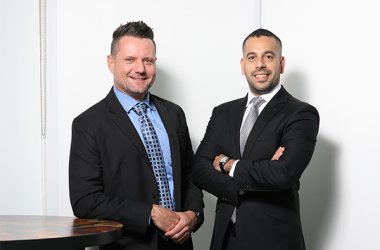
IBM outlined plans to expand into a new line of business that may ultimately incorporate futuristic technologies, such as paint infused with nano-size sensors, for managing energy usage in buildings and even cities.
The IBM plan calls for centralizing the management and extending the use of sensor technologies outside the data center. Sensor technologies are already widely used to monitor environmental conditions and to pinpoint problems in server racks and data centers.
IBM said that it now plans to partner with companies that make infrastructure systems, such as Johnson Controls Inc.
IBM and Johnson Controls agreed several years ago to work on integrating data center technologies, and yesterday the two companies announced that the agreement has been extended to include work aimed at improving building efficiency. Milwaukee-based Johnson Controls is a major designer and supplier of heating, ventilating, and air conditioning equipment and other building systems. It has 130,000 employees.
IBM detailed its general road map at the Pulse2010 service management conference here this week, where it enlisted the help of former Vice President Al Gore, who compared the need for better data about environmental conditions to the mortgage credit crisis. Although mortgages were issued to people who didn’t have the ability to pay them, this financial risk was hidden in securitized mortgages.
"When there are important factors that are systemically ignored, that can set us up for bad decisions," said Gore.
Gore often goes into detail about climate change in his talks, but to this audience of mostly IT managers, he focused on the need for efficiency and the profits that a climate-saving strategy can deliver.
"Even if you don’t buy into the evidence of the climate crisis," Gore said, the development of green technologies, through investments in smart grids and wind and solar energy, offers "a chance to boost our economy."
"Efficiency is by all odds the most productive strategy," said Gore.
IBM isn’t building sensors, but it expects to see wide adoption of sensor technology that can cover an office complex or a city like a blanket. The sensors could gather information about the health of physical systems and, for instance, discover leaks in pipes by detecting changes in the environment near the pipes. Sensors in manhole covers could detect problems there as well.
And as sensor technologies improve, particularly through the use of nanotechnologies that can be used to build microscopic sensors, their usage will spread, company officials said.
The technology usage may also drive closer working relationships between facilities and IT managers if all of the environmental systems — those for the data center and those for the building — are monitored in one system, said IBM officials.
Energy use by buildings accounts for about 40% of total emissions, according to IBM. The centralized management systems envisioned by the company will use IBM Tivoli software to gather data from sensors, analyze it and develop proactive alerts that warn of pending problems — or in the words of Al Zollar, IBM’s general manager for Tivoli Software, "fix things before they break."
Plan endorsed by Al Gore would manage energy use in buildings, cities





